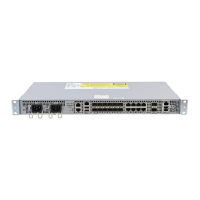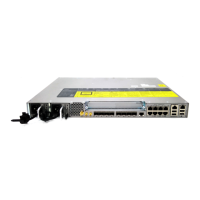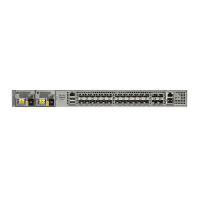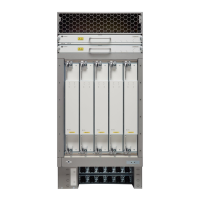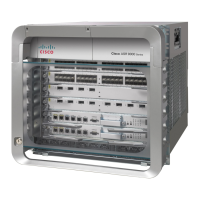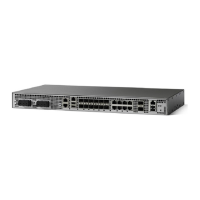•
Configuring a Static MAC Address, page 43
•
Monitoring EVC, page 46
•
Additional References, page 49
•
Feature Information for Ethernet Virtual Connections Configuration, page 50
Finding Feature Information
Your software release may not support all the features documented in this module. For the latest caveats and
feature information, see Bug Search Tool and the release notes for your platform and software release. To
find information about the features documented in this module, and to see a list of the releases in which each
feature is supported, see the feature information table.
Use Cisco Feature Navigator to find information about platform support and Cisco software image support.
To access Cisco Feature Navigator, go to www.cisco.com/go/cfn. An account on Cisco.com is not required.
Supported EVC Features
• Service instance—you create, delete, and modify EFP service instances on Ethernet interfaces.
• Encapsulation—you can map traffic to EFPs based on:
◦
802.1Q VLANs (a single VLAN or a list or range of VLANs)
◦
802.1Q tunneling (QinQ) VLANs (a single outer VLAN and a list or range of inner VLANs)
◦
Double-tagged frames mapped to EVC based on C-tags (wildcard S-Tags)
• Bridge domains—you can configure EFPs as members of a bridge domain (up to 64 EFPs per bridge
domain).
•
Rewrite (VLAN translation)
◦
Pop symmetric
pop 1 removes the outermost tag
pop 2 removes the two outermost tags
pop symmetric adds a tag (or 2 tags for pop 2 symmetric) on egress for a push operation
◦ Ingress push—The rewrite ingress tag push dot1q vlan-id symmetric command adds a tag to
an ingress packet
◦
QinQ with rewrite
Starting with Cisco IOS XE Release 3.15, rewrite ingress tag push is supported on QoS with CoS
Marking for EVCs on RSP2 module.
Ingress push on Qos on for EVC is not supported on RSP1 module.
Note
Carrier Ethernet Configuration Guide (Cisco ASR 920 Series)
12
Ethernet Virtual Connections Configuration
Finding Feature Information
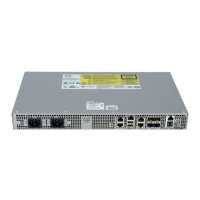
